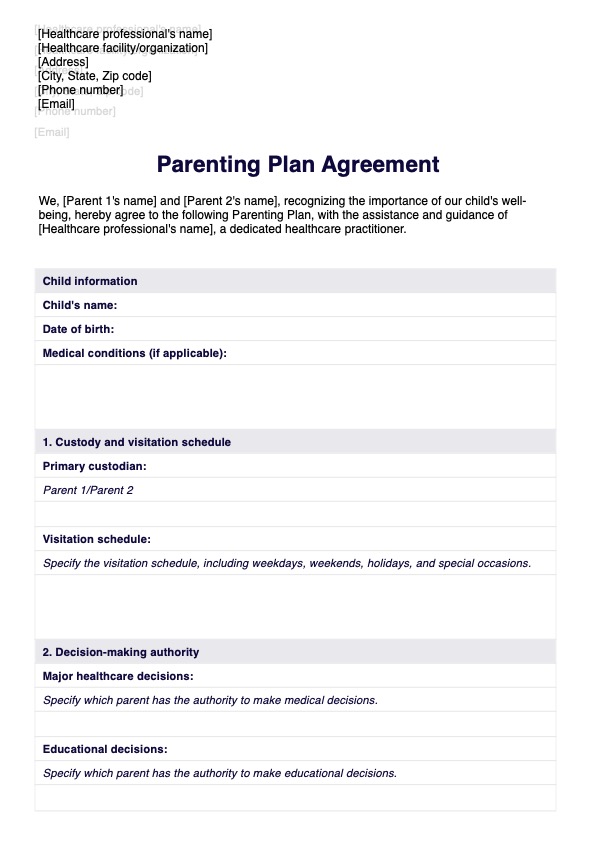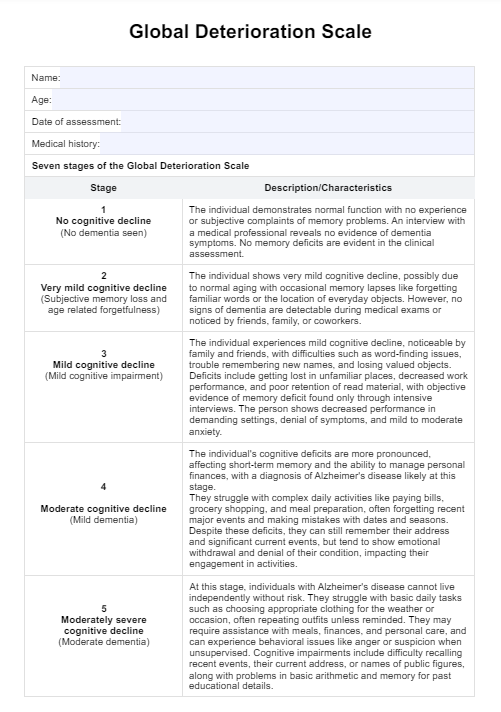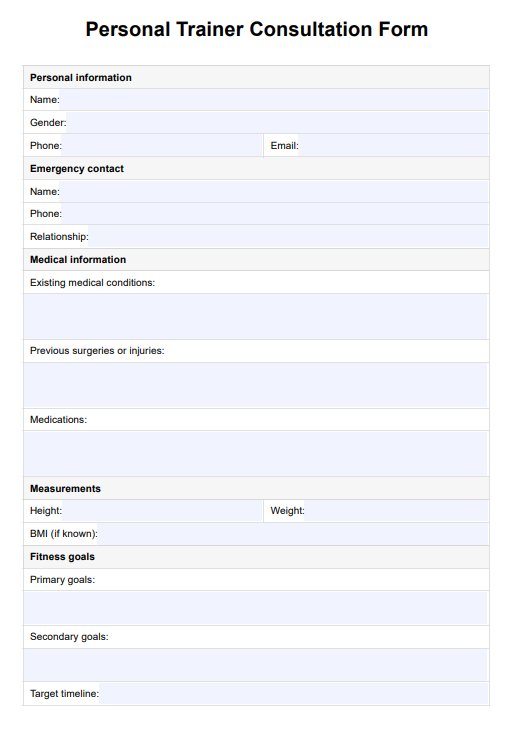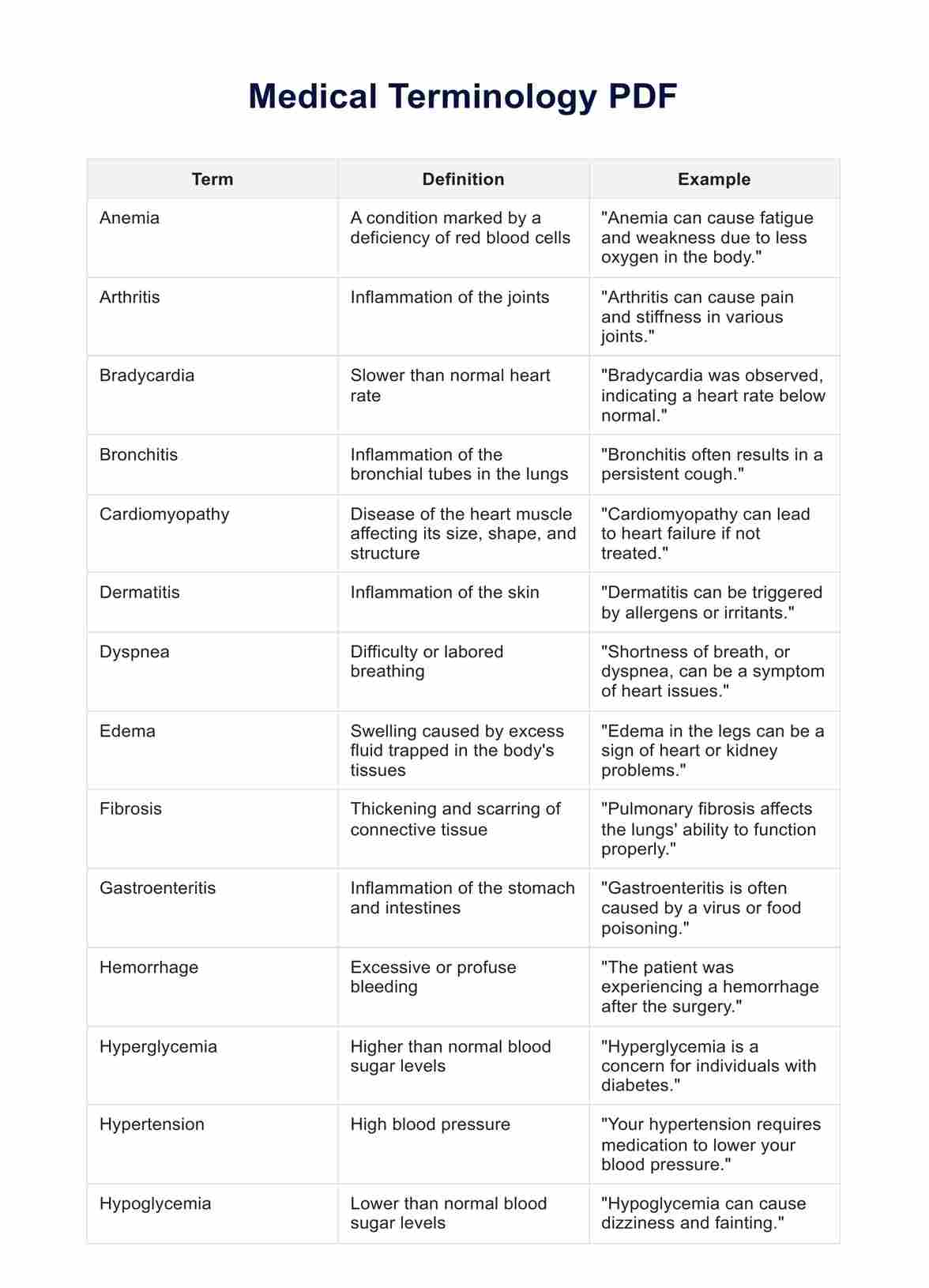SNAP Assessment
Learn more about SNAP Assessment, its purpose, and how to use it effectively. Download a free example and learn about scoring, interpretation, and next steps.


What is the SNAP Assessment?
The SNAP Assessment is a vital tool used in clinical settings to evaluate symptoms associated with attention-deficit/hyperactivity disorder (ADHD) and related conditions. Developed by Swanson, Nolan, and Pelham-IV (SNAP-IV), it serves as a pivotal instrument for diagnosing and managing ADHD across different age groups and populations.
Structured to know various dimensions of behavior, attention, impulsivity, and hyperactivity, the SNAP Assessment gathers detailed data from participants through questions or rating scales. Clinicians utilize this evidence-based scale to test ADHD symptoms and their severity, aiding in diagnosis and treatment planning.
SNAP Assessment Template
SNAP Assessment Example
Purpose
The primary aims of the SNAP Assessment criteria encompass:
- Identification of ADHD symptoms: One of its primary functions is to learn and quantify ADHD symptoms in individuals. These symptoms include inattention (difficulty sustaining focus, easy distractibility), hyperactivity (excessive restlessness, fidgeting), and impulsivity (acting without consideration, interrupting others).
- Facilitating diagnosis and treatment planning: The assessment aids clinicians in diagnosing ADHD accurately and planning effective treatment strategies. By evaluating symptoms across various dimensions, the SNAP Assessment assists in determining the severity of ADHD and identifying any related difficulties. This evidence-based approach supports the development of comprehensive treatment plans, which may include medication, behavioral interventions, and educational support tailored to the individual's needs.
How to use this template
The SNAP IV Assessment, or the Swanson, Nolan, and Pelham IV Questionnaire, is commonly used to track ADHD symptoms in children, as observed by teachers and parents. This scale measures inattention, hyperactivity, and impulsivity symptoms based on DSM criteria. Here's a step-by-step guide on how to use it:
Step 1: Familiarize with the scale
The SNAP IV Assessment, also known as the Swanson, Nolan, and Pelham IV Questionnaire, can also be a support for an ADHD test in children through reports from teachers, peers, and parents. This scale gauges inattention, hyperactivity, and impulsivity symptoms according to DSM criteria. The scale comprises 26 items, split into sections for inattention and hyperactivity/impulsivity, with each item rated on a scale from 0 to 3.
Step 2: Distribute the forms
Begin by distributing the SNAP IV forms to the child's teachers and parents or caregivers. Ensure they grasp that their responses should reflect the child's behavior over the preceding six months.
Step 3: Provide clear instructions
Offer clear instructions to teachers and parents on completing the questionnaire based on their observations of the child's behavior. Stress the significance of accuracy in responding to each item, considering the child's conduct across various settings and scenarios.
Step 4: Gather and review
Once the forms and materials are completed, collect them from the teachers and parents. Review the responses for completeness and consistency, ensuring all items are addressed. Follow up on any unanswered items to ensure thorough completion.
Step 5: Score the responses
Record the scores provided by the first group of respondents for each item. Calculate the average score for each subscale (Inattention and Hyperactivity/Impulsivity) by summing the scores for the items within each subscale and dividing by the number of items.
Step 6: Interpret the scores
Compare the average scores against established cutoff points to gauge and measure the severity of symptoms. Higher scores indicate more severe symptoms, though diagnosis and treatment decisions should be made by a healthcare professional following a comprehensive clinical assessment.
Step 7: Discuss with healthcare provider
Discuss the results with the child's healthcare provider, who may recommend further evaluation, formal diagnosis, and a tailored treatment plan if necessary. Consider a holistic approach incorporating educational interventions, behavioral strategies, and potentially medication.
Step 8: Monitor progress
Utilize the SNAP IV Assessment periodically to monitor the child's symptoms and evaluate the effectiveness of interventions. Regular reassessment facilitates adjustments to the treatment plan to meet the child's evolving needs better.
What are the benefits of using SNAP Assessment
The SNAP (Swanson, Nolan, and Pelham) Assessment offers several benefits in evaluating attention deficit hyperactivity disorder (ADHD) symptoms in school children:
- Comprehensive evaluation: The assessment provides an extensive review of ADHD symptoms, covering both inattention and hyperactivity/impulsivity domains based on DSM criteria. This holistic approach ensures a thorough understanding of the child's behavior.
- Structured measurement: It employs a structured scale with clear criteria for rating each item. This standardized approach enhances consistency in assessment across different raters and minimizes subjectivity in interpretation.
- Quantifiable results: It generates measurable results with a scoring system ranging from 0 to 3 for each item. These scores facilitate easy comparison against established cutoff points to determine the severity of symptoms, aiding in diagnosis and treatment planning.
- Monitoring progress: Beyond initial evaluation, the assessment can be used periodically to monitor the child's symptoms and track progress. This ongoing monitoring helps assess the effectiveness of interventions and adjust treatment plans as needed.
- Support for clinical decision-making: The assessment results can provide valuable insights for healthcare providers in making clinical decisions. The assessment results are valuable in guiding clinical decision-making, whether it's further evaluation, formal diagnosis, or developing a tailored treatment plan.
Commonly asked questions
SNAP stands for Swanson, Nolan, and Pelham-IV, which is a specific version of the ADHD assessment tool used in therapy.
The SNAP Assessment can be used for individuals of various ages, including children, adolescents, and adults.
SNAP-IV teacher-parent rating refers to a version of the SNAP Assessment that collects information from both teachers and parents regarding a child's behavior and symptoms of ADHD. This multi-informant approach helps provide a comprehensive understanding of the individual student's functioning across different settings.


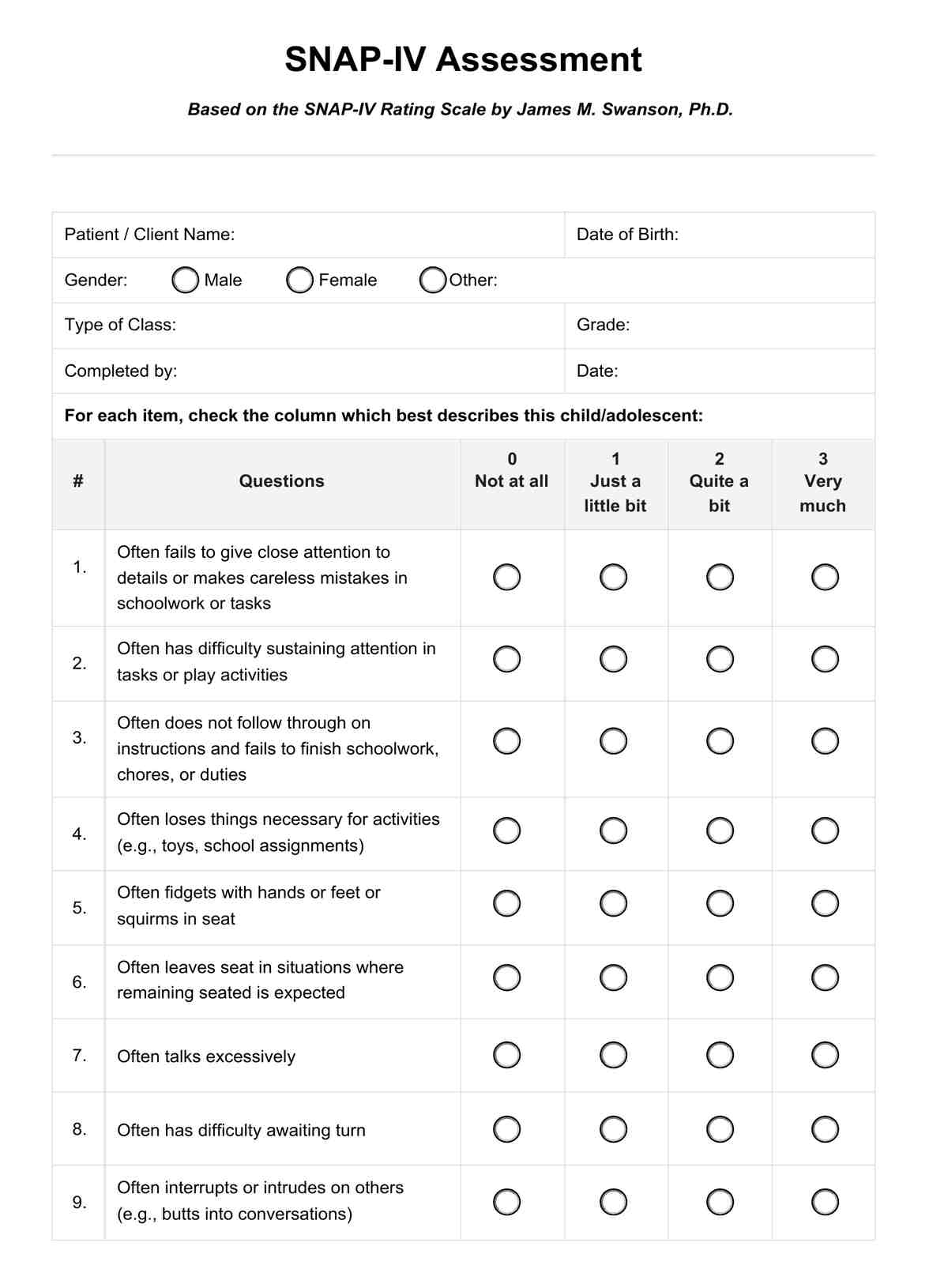
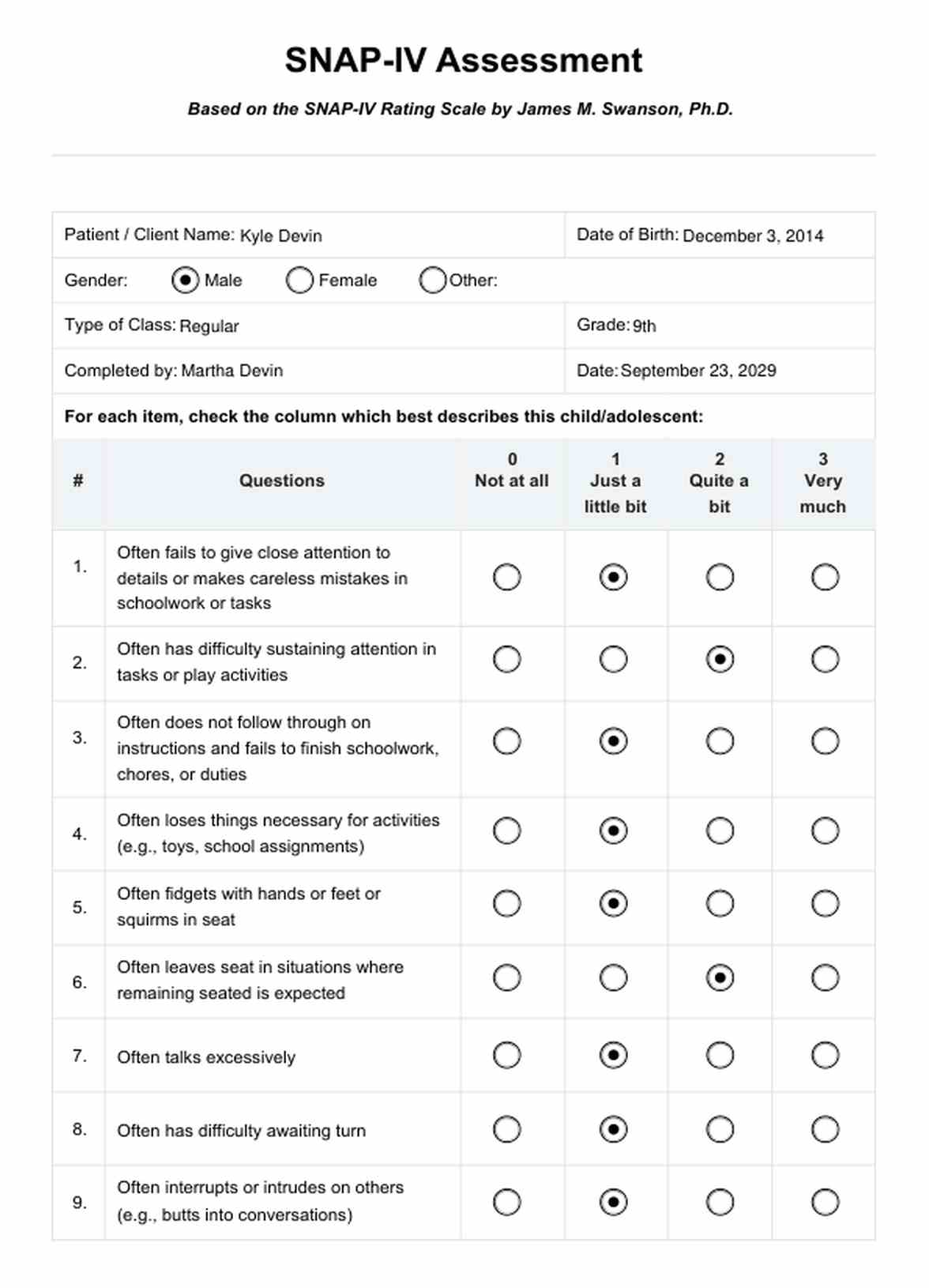





















-template.jpg)















































































